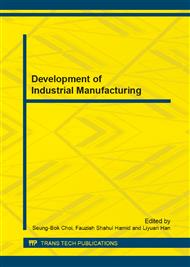p.646
p.653
p.657
p.661
p.665
p.671
p.677
p.681
p.685
Based on Vari Combination Forecasting Model for Power Plant Flue Gas Oxygen Contentance-Covariance Method
Abstract:
Focusing on the problem which power plant flue gas oxygen content is hard to predict efficiently, an intelligent hybrid prediction method is proposed. First, the RBF neural network and principal component analysis method are utilized to reduce the dimension of the input variables. Second, the case-based reasoning method is carried on to predict the flue gas oxygen content based on the above analysis results. Then, in order to reflect the cumulative effect of the flue gas oxygen content with time, the GM (1, 1) grey prediction method is used to predict the current flue gas oxygen content value. Finally, the final flue gas oxygen content is obtained by the variance-covariance method of weight combination forecasting. Simulations and industrial results show that the proposed intelligent hybrid prediction model has high accuracy and robustness, and can solve the problem of predicting the flue gas oxygen content effectively.
Info:
Periodical:
Pages:
665-670
Citation:
Online since:
February 2014
Authors:
Price:
Сopyright:
© 2014 Trans Tech Publications Ltd. All Rights Reserved
Share:
Citation:


